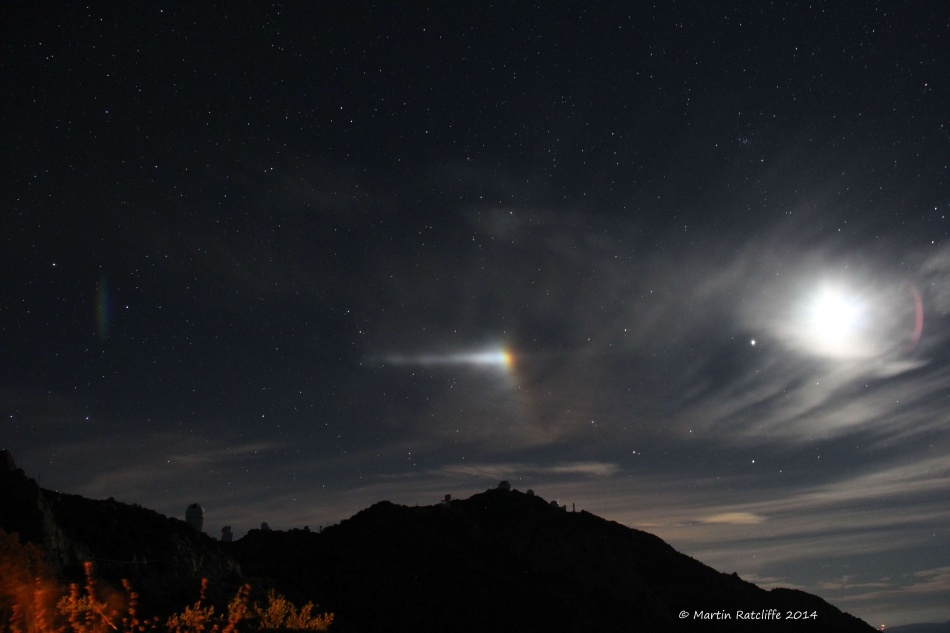DECEMBER 11, 2014
Moondog Night
EXPLANATION
In this night scene from the early hours of November 14, light from a last quarter Moon illuminates clouds above the mountaintop domes of Kitt Peak National Observatory near Tucson, Arizona. Bright Jupiter is just left of the overexposed lunar disk with a streak of camera lens flare immediately to the right, but that’s no fireball meteor exploding near the center of the picture. Instead, from the roadside perspective a stunningly bright moondog or paraselene stands directly over Kitt Peaks’s WIYN telescope. Analogous to a sundog or parhelion, a paraselene is produced by moonlight refracted through thin, hexagonal, plate-shaped ice crystals in high cirrus clouds. As determined by the crystal geometry, paraselenae (plural) are seen at an angle of 22 degrees or more from the Moon. Compared to the bright lunar disk they are more often faint and easier to spot when the Moon is low. About 10 minutes after the photograph even this bright moondog had faded from the night.
Image Credit & Copyright


